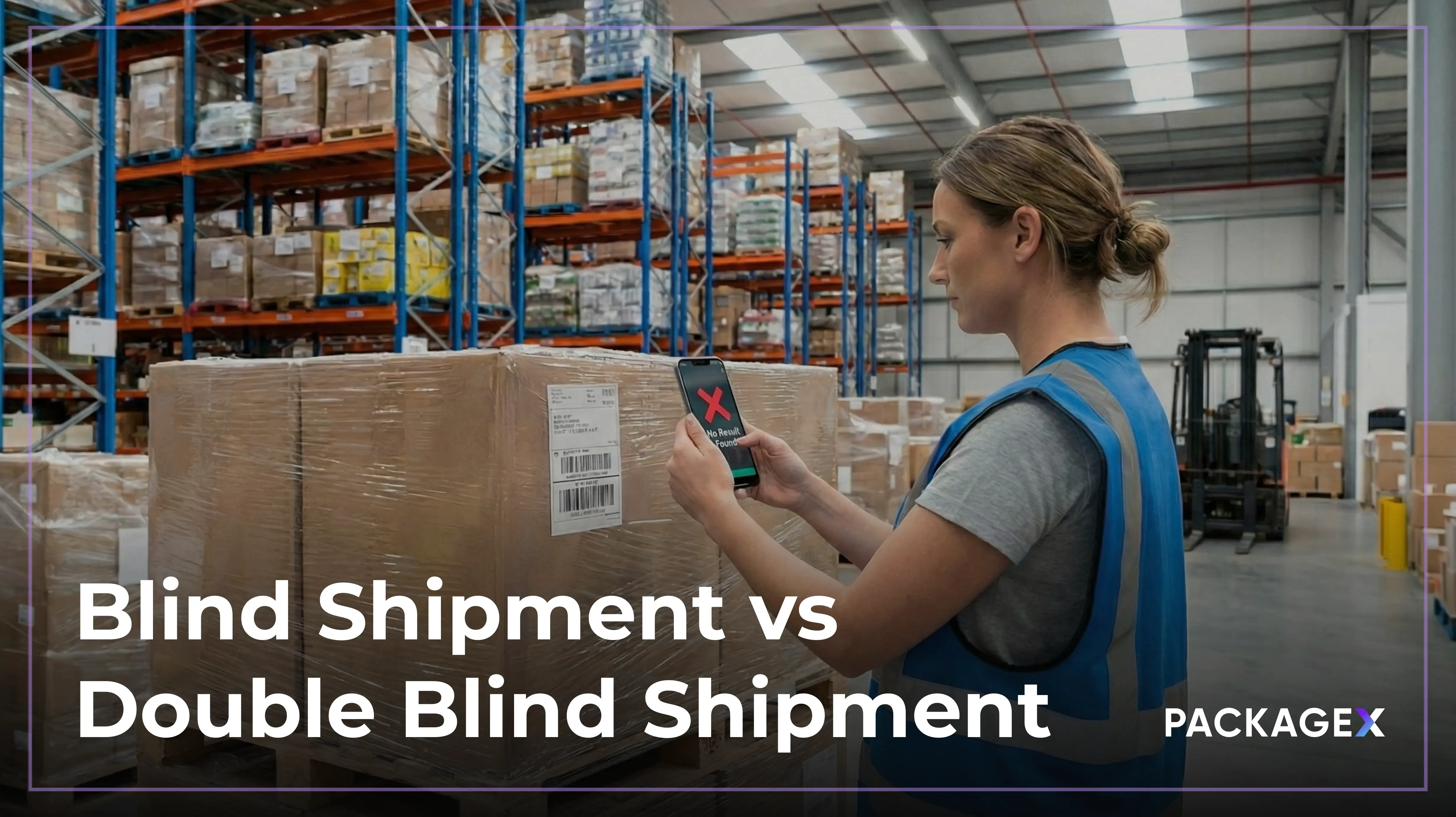Modern supply chains are under pressure to deliver goods quickly and reliably. Customers are now more demanding than ever, expecting timely and accurate delivery, and failing to meet these expectations can result in dissatisfaction, negative reviews, and lost revenue as customers turn to the competition.
Luckily, the On-Time In-Full (OTIF) metric can help. By measuring how effectively you deliver orders on time and in full, OTIF acts as an important benchmark for optimizing supply chains.
In this blog post, you’ll learn almost everything you need to know about OTIF to set yourself up for supply chain success. This includes understanding what OTIF is, why it matters, how to calculate it, and what you can do to improve it.
What Is the Meaning of OTIF?
OTIF is a supply chain management metric that measures the percentage of orders delivered on time and in complete quantities. More specifically, it assesses whether an order arrives at its intended destination within the delivery window (on time) and in the correct quantities, free of substitutions, omissions, or damages (in full).
By tracking OTIF, you can gain valuable insights into supply chain performance, which helps identify areas requiring improvement so you can better meet customer needs.
However, OTIF’s importance extends beyond a measurement tool; it’s a core efficiency driver that helps identify weaknesses in processes (such as delays in delivery or incomplete orders) so that you can take corrective action.
So, Why Exactly Is OTIF So Important?
OTIF is a key driver of customer loyalty, operational efficiency, cost savings, and competitiveness:
1. Enhancing Customer Satisfaction and Loyalty
Meeting or exceeding OTIF targets means you can consistently deliver complete orders on time or ahead of schedule, which leads to happier, more satisfied customers. This, in turn, boosts loyalty and enhances repeat business.
2. Improving Operational Efficiency
Tracking OTIF helps identify inefficiencies in logistics and supply chain management, which allows you to streamline operations and reduce costs.
For example, if a large number of orders aren’t delivered on time, it could indicate issues with transportation, inventory management, or even production scheduling. The order picking, packing, and shipping processes may need improvement to optimize order fulfillment.
3. Reducing Costs
By improving OTIF scores, you can improve cost management. Low OTIF scores are often linked to higher costs, with rushed shipments or expensive corrective measures to fix incomplete deliveries commonplace.
By tracking your OTIF score, identifying when it’s too low, and focusing on improving it so products are delivered on time and in full, you reduce the risk of returns and expensive last-minute freight changes, ultimately avoiding all these extra costs.
4. Building a Competitive Advantage
A higher OTIF positions you as a reliable supplier, which can be a key differentiator in a competitive market. Companies are more likely to partner with a supplier who constantly delivers complete order on time than someone who doesn’t because they know they can always depend on them.
How Do You Calculate OTIF?
Calculating OTIF is straightforward and involves using the following formula:
OTIF = (Total Number of On-Time and In-Full Deliveries / Total Deliveries) × 100
Breaking it down:
- Determine the total number of orders delivered for a specific period, whether complete or not (e.g., weekly, monthly, or yearly). For instance, let’s say 500 orders were delivered to customers in March.
- Determine the number of on-time, in-full deliveries for the same period. Tally the number of deliveries that contained the full order and were made on time. Clearly define the delivery window for this calculation. If that window is three days and certain orders took longer, exclude them from orders delivered on time and in full.
Similarly, if certain orders contained the wrong products, are damaged, or included the incorrect quantities (e.g., a customer ordered ten of an item but received 9), then exclude them from the total. For this example, let’s assume that 440 orders were delivered on time and in full in March.
- Plug your numbers into the formula to calculate the OTIF percentage: (440 / 500) × 100 = 88%.
Now that you’ve calculated your OTIF score, you might wonder: Is this even a good score?
What Is a Good OTIF?
In an ideal world, every supplier wants to achieve a perfect OTIF score of 100%. However, the reality is that this is rarely possible due to various factors that can affect OTIF, such as human error, unforeseen supply chain challenges, and fluctuations in customer demand.
Some industries, by their very nature, also have different thresholds for what’s acceptable. For example, industries handling highly perishable goods, like food, face strict time constraints, with any delays potentially leading to spoilage or financial loss. Therefore, aiming for higher OTIF scores of over 95% is in their best interest.
Conversely, industries dealing with durable goods, such as electronics, generally have more flexibility in lead times, and an OTIF in the 90-95% range is usually acceptable.
With all that being said, as a general guideline, an OTIF of approximately 95-99% is considered excellent in most industries. In comparison, a score below 85% is generally regarded as poor.
So, while an OTIF of 88% achieved in the previous example isn’t necessarily bad, there is room for improvement.
How Do You Improve Your OTIF?
Enhancing your OTIF score typically requires a comprehensive approach rather than a single strategy. Here are five key strategies for improving your OTIF score:
1. Invest in the Right Technology to Optimize Processes
Optimize various aspects of the supply chain using technology, including:
- Inventory management software to automate inventory processes that would otherwise require manual input while also helping you track stock in real-time.
- An end-to-end solution for receiving, storing, routing, and delivering packages. The right solution offers AI scanning technology to streamline order processing and reduce human error during order fulfillment and OCR scanning technology to automate data capture, reduce errors, and enhance visibility and traceability of packages.
- AI-powered sorting robots that categorize items based on their intended destination to help manage a large volume of shipments while maintaining OTIF scores.
2. Enhance Communication With Suppliers to Minimize Order Delays
Set up regular communication channels with suppliers to receive updates about any delays and potential issues well in advance so you can manage and minimize order delays.
Examples of communication channels include email, instant messaging apps like WhatsApp and Slack, video conferencing tools like Zoom, and team collaboration platforms like Asana or Trello.
3. Optimize Inventory Management Processes
Use demand forecasting tools to align stock levels with demand and minimize delays. For example, predictive analytics powered by machine learning algorithms can help you analyze large data sets much faster than traditional methods and adapt to new data like supply chain disruptions or unexpected events in real time.
You can also implement just-in-time (JIT) practices so that stock is ordered as needed, which streamlines production and delivery processes. This approach reduces lead times and ensures that the right products are closely aligned with demand, making them available for prompt order fulfillment. Furthermore, JIT improves quality control by focusing on smaller batches which reduces the likelihood of errors that may impact orders being delivered in full.
4. Educate and Train Staff on OTIF
Educate and train staff on the importance of OTIF and their role in achieving OTIF goals. This helps them understand how their individual actions will impact order fulfillment and customer satisfaction.
When they understand their role, they are more likely to take full ownership of their responsibilities, which helps minimize mistakes and improves efficiency.
To reinforce this understanding, consider implementing regular training sessions that educate staff on key concepts. Use real-world case studies to demonstrate their significance and encourage open discussions on why staff may be struggling to achieve specific OTIF targets.
5. Constantly Monitor OTIF Scores
Constantly track OTIF scores so you can quickly identify significant deviations from the norm. You can then investigate to determine the cause and decide on the appropriate solution. For instance, if there is a recurring issue with late deliveries from a specific supplier, you may need to talk to them about fixing the problem or look for an alternative supplier.
{{returns-webinar}}
Boost Supply Chain Performance by Improving Your OTIF today
OTIF is more than just a measurement tool for tracking delivery performance; it’s a crucial driver of customer loyalty, operational efficiency, cost savings, and competitiveness.
By focusing on better communication with suppliers, optimizing inventory management, educating and training your staff, regularly tracking your OTIF scores, and using the right technology, you can boost your ability to deliver orders on time and in full.
Speaking of the right technology…
Package X is modernizing logistics and delivery management with a complete solution for receiving, storing, routing, and delivering. It consists of AI scanning technology to speed up order processing while maintaining 95% accuracy and OCR scanning technology to automate data capture and improve the visibility and traceability of packages.
Learn how PackageX can help you modernize your delivery management to improve your OTF. Book a demo today.

.avif)


